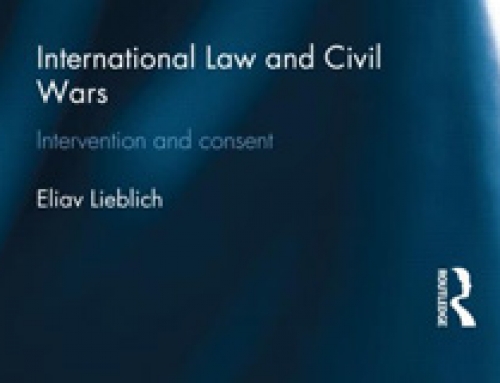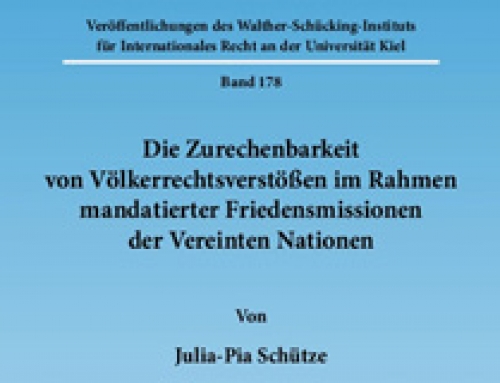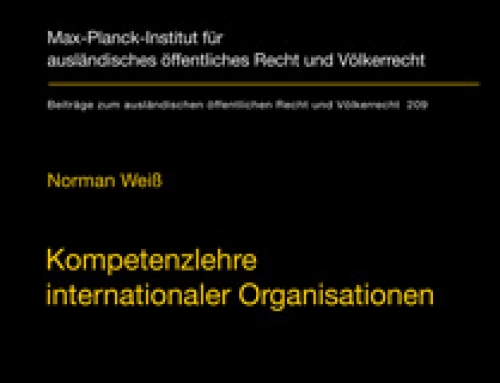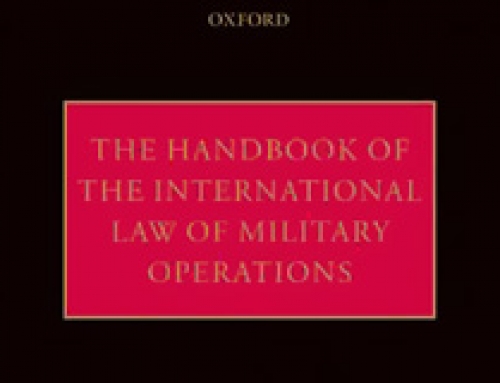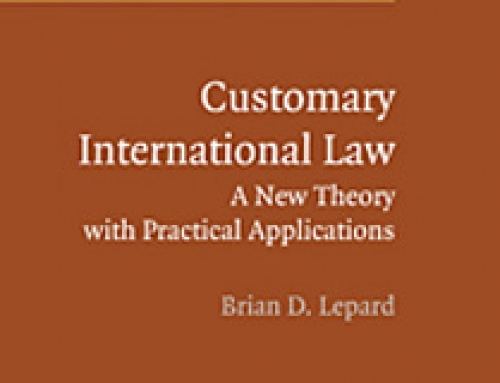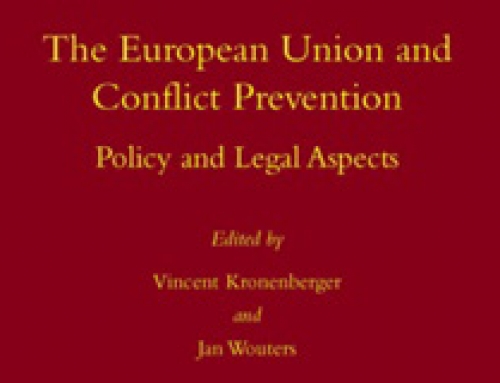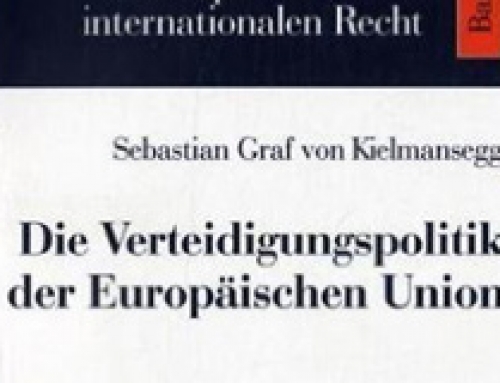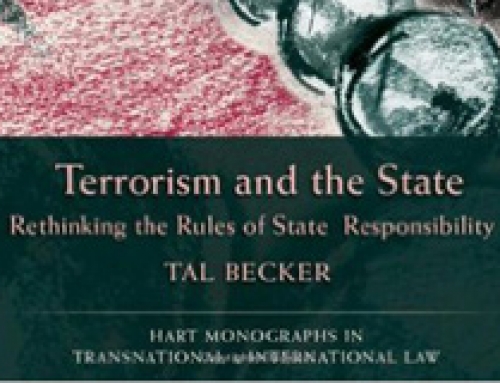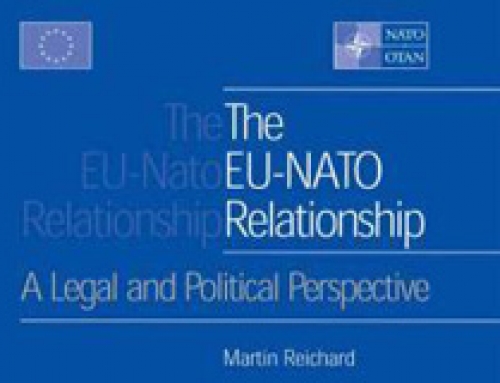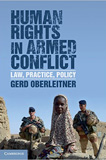
Gerd Oberleitner, Human Rights in Armed Conflict: Law, Practice, Policy (Cambridge University Press, 2015, 431 + xx pp, £109.99) ISBN 9781107087545, Hardback.
Today, it is widely recognised that human rights continue to apply in times of war. However, the implications of this principle remain contested. The international community is deeply divided about the proper role of human rights norms in situations of armed conflict, in particular the manner and extent of their applicability. At the heart of this debate lie competing visions of the relationship between international human rights law and international humanitarian law, fuelled by competing understandings of the nature and purpose of these two legal regimes. For some, what is at stake is the further humanisation of warfare. For others, it is the preservation of military effectiveness. In recent years, the debate on human rights in armed conflict has opened up an intellectual battleground. Scarred by the clash of opposing theories, principles and scholarly contributions, it is a battleground in which the competing positions have become increasingly entrenched.
Gerd Oberleitner enters the fray armed with an ambitious objective. In his book, he sets out ‘to explore the legal challenges, practical consequences and policy implications of resorting to international human rights law in situations of armed conflict’ (p. 2). This is a formidable undertaking. It is based on the premise that the debate about human rights in armed conflict is not simply a matter of reconciling two distinct legal regimes, but requires us to address more profound questions about the legal regulation of warfare itself. This perspective represents one of the great strengths of Oberleitner’s study. It enables him to fuse the narrow, more technical aspects of the subject with broader considerations relating to the overall evolution of the legal framework of warfare. This is helpful in at least two ways. The impact of human rights owes as much to the growth of international human rights law as a regulatory framework as it does to the influence of the underlying human rights discourse. Much of the legal chatter[1] that makes up this discourse does not rise to the level of formally binding rules or practice contributing to the formation of rules of customary international law. Nevertheless, it plays a critical role in shaping legal expectations, including the interpretation and application of the relevant norms. The focus on law, practice and policy, as reflected in the book’s subtitle, permits Oberleitner to capture this aspect of the subject without getting himself entangled in sterile methodological disputes. This broad perspective also enables him to openly acknowledge and embrace the policy dimension of his own work. Recognising that all contributions to the present debate arrive with one piece of intellectual baggage or another, Oberleitner nails his colours to the mast at the outset and positions his book as part of a centuries-old tradition of humanising the conduct of war. Indeed, the fact that the book blends legal and policy arguments openly is one of the reasons why it is such a stimulating read. It obviates the need to dress up policy considerations as legal arguments, allowing Oberleitner to root his study in existing law and established legal doctrine, whilst at the same arguing that the increased reliance on international human rights law in armed conflict represents a positive trend. The outcome is an engaging fusion between positivist legal analysis and the progressive development of the law.
Nonetheless, the study does not quite succeed in bridging the gulf between the law as it currently exists and the law as it ought to be. As Oberleitner demonstrates in detail in the first part of his study, since 1945, the co-existence of international human rights law and international humanitarian law has given way to their growing convergence. While it is certainly true that the ‘ethos, language and law of human rights thus exercises a considerable pull on established concepts and norms of international humanitarian law’ (p. 79), it does not follow that nowadays the notion of ‘humanitarian’ in international humanitarian law ‘can be understood only with reference to the idea, language, law and policy of human rights as the dominant moral and legal discourse of our times’ (p. 340). This conclusion would be justified if the objectives of human rights law had replaced the distinct logic and objectives of humanitarian law, rendering the convergence between the two legal regimes complete. However, this is not the case as a matter of existing law, since humanitarian law retains much of its distinct normative identity. Consequently, the conclusion presupposes exactly what has to be demonstrated, namely that international humanitarian law as a whole ought to be re-read through the perspective of international human rights law.
Oberleitner offers several reasons that militate in favour of such a re-reading. He argues that the differences between the two regimes are not as pronounced as is often assumed. In this respect, he closely examines the emphasis that international humanitarian law places on State obligations and the preoccupation of human rights law with individual rights, but concludes that this difference and its implications are exaggerated (pp. 176–185). Accordingly, the two legal regimes are not incompatible in their structure as is sometimes asserted, but capable of harmonious interpretation. Throughout the book, Oberleitner acknowledges that such harmonious interpretation poses a series of practical difficulties for international humanitarian law, but denies that it gives rise to any principled objections. This is so because, in Oberleitner’s view, the differences between the two legal regimes are gradual rather than absolute. Take the use of lethal force, for example. International humanitarian law permits the use of deadly force based on the battlefield status of an individual, whereas human rights law operates under a more restrictive, threat-based paradigm, permitting lethal force only if absolutely necessary for certain limited purposes. However, proportionality and necessity play a prominent role under both regimes. Although their meaning differs in these two contexts, they nevertheless represent a common normative ground, opening the way for aligning the relevant rules of international humanitarian law with those of human rights law (see pp. 129–143). According to Oberleitner, the benefits of such an overall re-alignment outweigh its disadvantages. For example, he suggests that despite their mixed record in the area, human rights bodies offer a more promising supervisory mechanism for enforcing international humanitarian law than the dysfunctional means of enforcement available under international humanitarian law itself (see pp. 239–339). Re-aligning humanitarian law with human rights law would also ensure that the norms most favourable to the individual would apply. Oberleitner bases this idea on the presumption that ‘it is the intent of states parties to instruments of humanitarian law and human rights law alike to be bound by the highest possible standard with regard to the protection of individuals in times of armed conflict’ (p. 342).
This last point is undoubtedly the weakest link in the entire line of argument. Nothing indicates that it is the intention of States to be bound by the highest possible standards in times of armed conflict nor does Oberleitner make a sustained effort to substantiate this claim. If anything, the continued existence of international humanitarian law as a distinct branch of international law, including the significant growth in the customary rules of humanitarian law in recent years, points to the opposite conclusion. Essentially, Oberleitner takes a leap of faith here. Those not prepared to take this leap with him will most likely remain unconvinced by some of his arguments. In this respect, it is particularly difficult to concur with his preference for a comprehensive convergence between humanitarian and human rights law and his rejection of a more graduated approach to their relationship. Whereas the idea of comprehensive convergence suggests that no aspect of international humanitarian law should be excluded, a priori, from the transformative influence of human rights law, proponents of a graduated approach argue that this transformative impact should be confined to circumstances that resemble ordinary peace-time conditions, but play no or only a more limited role in the context of armed hostilities. Oberleitner dismisses this graduated approach partly because it relies on the problematic distinction between law-enforcement and the conduct of hostilities and partly because it harks back to the exclusionary logic of the lex specialis principle, which he rejects as an argument designed to maintain the exclusivity of humanitarian law and to keep human rights law at bay. This may well be the function of lex specialis, but the more relevant question is whether imposing a cordon sanitaire in order to preserve at least certain elements of international humanitarian law from the influence of human rights law, whether through lex specialis or some other means, is justified or not.
This question takes us back to the underlying objectives of international humanitarian law. If the sole objective of international humanitarian law is to maximise the legal protection of individuals in times of war, it would indeed be difficult to justify the erection of a cordon sanitaire to shield it from the influence of human rights law. However, the protection of individuals from the vicissitudes of war is not the sole concern of international humanitarian law.[2] As Oberleitner himself acknowledges, international humanitarian law is founded on the interplay between humanitarian considerations and military necessity. As a result, one of its principal functions is to provide a channel for the lawful use of violence in warfare by shielding civilians and civilian objects from the effects of hostilities on the one hand, whilst exposing military objectives to legitimate attack on the other hand. This second, permissive aspect of international humanitarian law is confirmed by the longstanding, consistent and general practice of States in the conduct of status-based operations against enemy military objectives. It is difficult to see how the permissive rules governing the conduct of status-based operations, including lethal targeting and detention, could be further humanised through the medium of human rights law without denying the distinct normative logic and integrity of international humanitarian law as it applies in international and non-international armed conflicts.
The point may be illustrated with reference to the principle of proportionality under international humanitarian law. As Oberleitner notes, both legal regimes are based on the idea that incidental harm to those who are not the lawful targets of deadly force should be avoided. However, whereas international human rights law requires such harm to be avoided to the maximum extent possible, international humanitarian law requires it to be avoided to the maximum extent that military considerations permit and, in any event, to an extent that does not exceed the direct and concrete military advantage anticipated from the attack (see p. 137). Oberleitner suggests that it is possible to reconcile these two approaches. He gives the example of an attack against enemy soldiers hiding among the civilian population (p. 138). Under international humanitarian law, launching an attack against the soldiers may be permissible as long as the incidental harm the civilians are expected to suffer does not outweigh the military advantage anticipated. Oberleitner proposes a stricter reading of this principle inspired by international human rights law, whereby the attack is permissible only if the soldiers pose an immediate threat.
Contrary to what Oberleitner suggests, the difference between the actual principle and its restrictive reading is not simply one of degree. It is one of principle. On closer inspection, it is clear that Oberleitner’s restrictive reading does not simply raise the threshold of proportionality under international humanitarian law, but replaces it altogether with the logic of human rights law. In our hypothetical scenario, the restrictive reading of proportionality would no longer permit the use of offensive lethal force against the enemy soldiers if the attack is expected to cause harm to civilians. Instead, the use of lethal force would have to be limited to self-defence. This is human rights law pure and simple. The principle of proportionality under international humanitarian law would have no independent role to play in the circumstances covered by our hypothetical example. The supposed reconciliation of the two legal regimes thus ends up in the displacement of international humanitarian law.
Not only does this give rise to objections of principle, but it also raises serious practical concerns. Consider a situation where an attack against a military objective offering an exceedingly high military advantage is expected to cause harm to a single civilian. Under the restrictive reading, it would never be permissible to launch an offensive attack against the target, regardless of the degree of military advantage it presents. Not only would this be unacceptable from a tactical point of view, but its significance undoubtedly would not be lost on the opposing forces either. Placing a single civilian amidst a heavily fortified military base, or placing a child on top of every armed pick-up truck, would thus be sufficient to shield those targets from offensive attack. In fact, in many cases the need for the deliberate use of human shields would not even arise. Given the widespread reliance of conventional armed forces on the services of civilians and the conceptual difficulties that surround membership in organised armed groups belonging to non-State actors, those planning an attack against larger military objectives, such as a military base, a training camp or similar installation, may not reasonably assume that such objectives are populated exclusively by combatants, other than in exceptional or very specific circumstances (sea warfare comes to mind). Accordingly, those planning or conducting an attack against such targets would have three options. First, they could attempt to establish the battlefield status of every single individual located at the target in order to satisfy themselves that no civilians are present or that they will not suffer harm. However, in many if not most cases it will be impossible to obtain such positive identification. Second, they could provoke the hostile forces into opening fire and then respond with force in self-defence. However, a set of rules requiring soldiers to deliberately expose themselves to lethal danger before they can open fire is unlikely to inspire their confidence and respect. Also, the use of force would have to be limited to what is absolutely necessary to avert the threat. On top of this, diverse national definitions of self-defence would almost certainly cause severe difficulties in the context of multinational operations. Finally, they could cancel or disengage from the attack. Neither of these options makes much sense from a military perspective. No doubt, the restrictive reading of the principle of proportionality is well-intended. However, it is difficult to see how it can be reconciled with the logic of international humanitarian law and, as these examples sought to demonstrate, the realities of warfighting.
The present book demonstrates the promise and potential of using international human rights law to further humanise international humanitarian law. Its key message is that the two legal regimes should be interpreted in a way that ensures the highest level of protection for individuals caught up in armed conflict. As a result of pairing this message with a conservative legal methodology, the author develops his position in a balanced and transparent manner. The care he takes in considering the competing arguments, coupled with his lucid style, make for instructive as well as enjoyable reading. Despite these merits, not everyone with a stake in the debate on human rights in armed conflict will be persuaded by the arguments presented. However, they deserve to be considered carefully.
Forthcoming in Human Rights Law Review.
[1] Fittingly, Fischer-Lescano, Globalverfassung: Die Geltungsbegründung der Menschenrechte (2005) at 271 refers to ‘Prozesse des Herbeiredens der Menschenrechte’, which may be loosely translated as the processes of talking human rights into existence.
[2] In greater detail, see Aughey and Sari, ‘Targeting and Detention in Non-International Armed Conflict: Serdar Mohammed and the Limits of Human Rights Convergence’, (2015) 91 International Law Studies 60 at 89–94.

